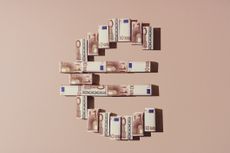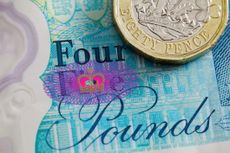Why the dollar is set to plunge
The US dollar strengthened during 2005 despite America's massive twin deficits. But with hints that the US interest rate-tightening cycle is drawing to a close, the greenback's luck may have run out.
We have long held the view that the extraordinarily strong gold price since February 2001 was, first and foremost, the key signal of prolonged dollar weakness. Since last year gold's signal has been broader based, pointing an accusing finger at fiat money generally. Gold, as money, is in control.
Wednesday 3rd May's reading for the US Dollar Index was 92.4. Recently we said, when the reading was at 95, that the dollar's fall would gather greater momentum below 94.6. That is exactly what happened, decisively and speedily.
The dollar's decline originally started in January 2002, but from the end of 2004 it enjoyed a modest revival. However, the fundamental reason for the dollar's weakness has since become greater. Following the recent G7 meeting and the subsequent statement, it seems that there will now be a concerted effort to remedy the global imbalances in an orderly way - if a collapsing dollar can be called orderly'!
Subscribe to MoneyWeek
Subscribe to MoneyWeek today and get your first six magazine issues absolutely FREE

Sign up to Money Morning
Don't miss the latest investment and personal finances news, market analysis, plus money-saving tips with our free twice-daily newsletter
Don't miss the latest investment and personal finances news, market analysis, plus money-saving tips with our free twice-daily newsletter
It should come as no surprise that a number of central banks, the latest being the Swedish Central Bank, are cutting back their dollar holdings. Most are switching to euros although the brutal strength of gold bullion leads us to believe that some very big players out there are also picking up gold bullion.
The Russian Finance Minister, Alexei Kudrin, recently said of the dollar: "The greenback's recent volatility and the yawning US trade deficit are definitely causing concern with regard to its reserve currency status. The international community can hardly be satisfied with the instability." Euros and gold are bound to be high on the list of his alternative assets, particularly bearing in mind that two thirds of the oil and gas produced by Russia now goes to the eurozone.
Bill Gross, who we quote not for the first time, expects the Fed to embark upon a policy of competitive devaluation. If that is so, the Fed will find no shortage of willing helpers. A huge number of investors and traders out there have a predisposition to be short of the dollar. Who, at this stage, would wish to support the dollar, if even the Fed is in favour of a lower dollar?
If this is a worldwide concerted effort to unravel some of the world's imbalances (the American current account deficit), a much weaker dollar is inevitable. Look back to 1985, the previous occasion when a globally contrived dollar devaluation took place: from April 1985, the dollar fell 23% in only 12 months and by early 1988 it was a full 37% lower.
All major currencies should benefit so as non-American investors we can all look forward to when American assets will be available to us at hugely discounted prices. Buying a villa in Florida in 1988 was just brilliant; it might be equally brilliant again a year or so from now.
By John Robson & Andrew Selsby at RH Asset Management Limited, as published in the Onassis Newsletter, a fortnightly newsletter that gives insight into the investment markets.
For more from RHAM, visit https://www.rhasset.co.uk/
-
 Top-quality, rapidly growing European stocks are selling at enticing valuations
Top-quality, rapidly growing European stocks are selling at enticing valuationsTimothy Lewis, portfolio manager at JPMorgan European Growth & Income tells us where he’d put his money
By Timothy Lewis Published
-
 Check Your State Pension forecast tool launched to ‘simplify’ filling National Insurance Contributions gaps
Check Your State Pension forecast tool launched to ‘simplify’ filling National Insurance Contributions gapsNews The government claims the online Check Your State Pension forecast will allow people to avoid having to phone HMRC and the DWP
By Henry Sandercock Last updated